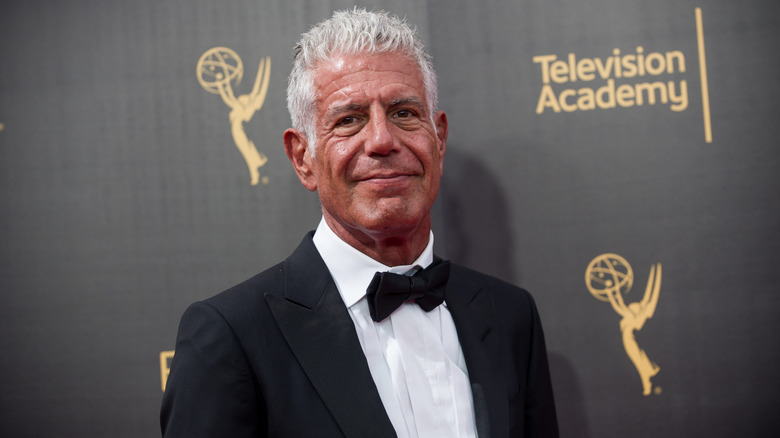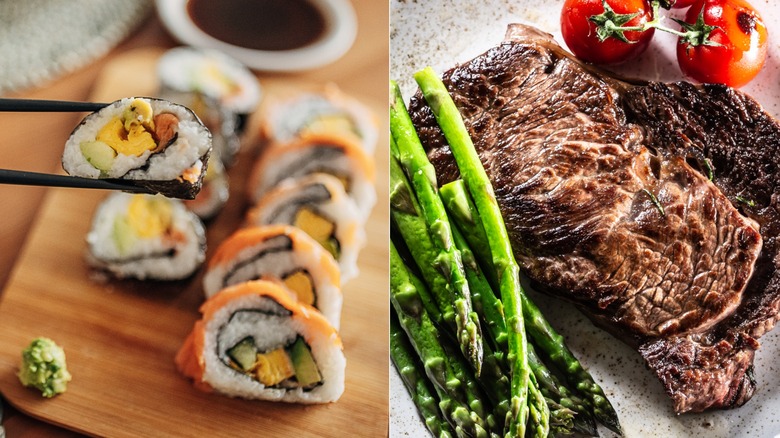Why Anthony Bourdain Avoided Restaurants If Both Steak And Sushi Were On The Menu
Anthony Bourdain was an incredible chef and food philosopher extraordinaire. He had strong opinions about what made a restaurant worth dining in, and one of his clearest rules (which he explained in an interview with First We Feast) was that, if a restaurant serves both steak and sushi, consider it a red flag. For Bourdain, this kind of menu was a sign that the restaurant was trying too hard to please everyone — and likely not doing anything particularly well. Steak and sushi are radically different dishes, each requiring specific skills, tools, and sourcing.
One is all about fire, seasoning, and sear, while the other highlights precision, raw freshness, and keeping things simple when it comes to flavor. When they're both listed on a menu, Bourdain saw this as a sign that the kitchen had no clear identity. It's kind of an interesting take because we usually like to think of versatility as a good thing. Well, not so in the eyes of Bourdain, and who are we to question his culinary chops?
It may seem like snobbery, but Bourdain viewed this topic through a lens of authenticity and focus. He believed that great food came from deep understanding and repetition. A chef mastering the art of nigiri shouldn't also be grilling juicy ribeyes, just as a steakhouse shouldn't dabble in sashimi or sushi. According to Bourdain, a menu trying to do it all usually ends up doing none of it well.
The problem with the 'something for everyone' mentality
Anthony Bourdain believed that the "jack-of-all-trades, master of none" mentality undermines the craft that real cooking demands. He wasn't against variety in principle, as he actually loved global street food, but he was deeply wary of any restaurant that didn't have a defined point of view. If you're dining out, he argued, the goal should be to experience the chef's expertise and soul through the food, not check every possible box on a crowd-pleasing menu.
Of course, Bourdain wasn't so rigid that he didn't understand that exceptions exist. He wasn't knocking buffet restaurants outright or calling every combo menu a disaster. In cities like Las Vegas, all-you-can-eat buffets might serve both steak and sushi — and sometimes surprisingly well — because of scale, specialization, and sheer volume of demand. Those aren't restaurants banking on a curated chef's vision; they're offering variety and value. But a mid-range restaurant trying to pull off a surf-and-turf-and uramaki night might be a harder sell, and Bourdain simply didn't trust it.
His advice wasn't about gatekeeping — it was more about recognizing what goes into making truly great food. A sushi chef spends years perfecting rice, knife skills, and sourcing. A steakhouse builds flavor with fire and technique, always aiming to achieve the perfect doneness and presentation. From Bourdain's perspective, it would seem that doing both justice requires more than ambition ... it demands two entirely separate kitchens. So, the next time you spot a menu boasting Wagyu and spicy tuna rolls side-by-side, remember Bourdain's advice: if they can't choose what they're great at, they probably aren't great at anything.

